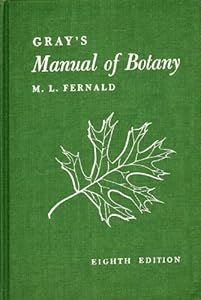 |
| Asa Gray vuonna 1864 kuva wikimedia |
Asa Gray (November 18, 1810 – January 30, 1888) is considered the most important American botanist of the 19th century.
He was instrumental in unifying the taxonomic knowledge of the plants of North America. Of Gray's many works on botany, the most popular was his Manual of the Botany of the Northern United States, from New England to Wisconsin and South to Ohio and Pennsylvania Inclusive. This book, known simply as Gray's Manual, has gone through a number of editions with botanical illustrations by Isaac Sprague, and remains a standard in the field.
...
Gray and Charles Darwin met at Kew, introduced by Joseph Dalton Hooker. Darwin then wrote to Gray requesting information about the distribution of various species of American flowers, which Gray provided, and which was helpful in providing information for the development of Darwin's theory. This was the beginning of an extensive lifelong correspondence.
Gray, Darwin and Hooker became lifelong friends and colleagues, and Gray and Hooker conducted research on Darwin’s behalf in 1877 on their Rocky Mountain expedition. After Hooker returned to England and reported to Darwin on their adventure, Darwin wrote back to Gray: “I have just...heard prodigies of your strength & activity. That you run up a mountain like a cat!”
...
The correspondence with Gray was thus a key piece of evidence in establishing Darwin's intellectual priority with respect to the theory of evolution through natural selection.
...
Gray, considered by Darwin to be his friend and "best advocate", also attempted to convince Darwin in these letters that design was inherent in all forms of life, and to return to his faith. Darwin agreed that his theories were "not at all necessarily atheistical" but was unable to share Gray's belief. "I feel most deeply that the whole subject is too profound for the human intellect. A dog might as well speculate on the mind of Newton," he wrote.
Notwithstanding, Gray was a staunch supporter of Darwin in America, and collected together a number of his own writings to produce an influential book, Darwiniana. These essays argued for a conciliation between Darwinian evolution and the tenets of theism, at a time when many on both sides perceived the two as mutually exclusive. Gray denied that investigation of physical causes stood opposed to the theological view and the study of the harmonies between mind and Nature, and thought it "most presumable that an intellectual conception realized in Nature would be realized through natural agencies"
Kirjeenvaihdosta Grayn ja Darwinin välillä on paljon tietoa internetissä, katso esimerkiksi Darwin Correspondence Project

Ei kommentteja:
Lähetä kommentti